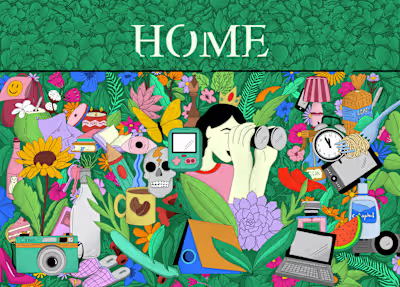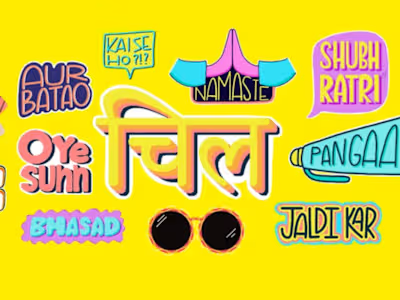Roots: Children's Picture Book
A Visit to Honnalli Village
The biggest challenge wasn’t merely spending time with Tulsi Gowda but actually finding her. After exhausting all online research, I tracked her last known connection to the Karnataka Forest Department, convincing them to guide me to her village, Honnalli, near Gokarna. When we arrived, to our surprise no one knew about Tulsi Gowda who had contributed so much to environmental conservation and won the Padma Shri. After hours of navigating language barriers & searching for directions, we finally found her. There she was, tending to her plants—quietly, naturally, as if one with the earth.
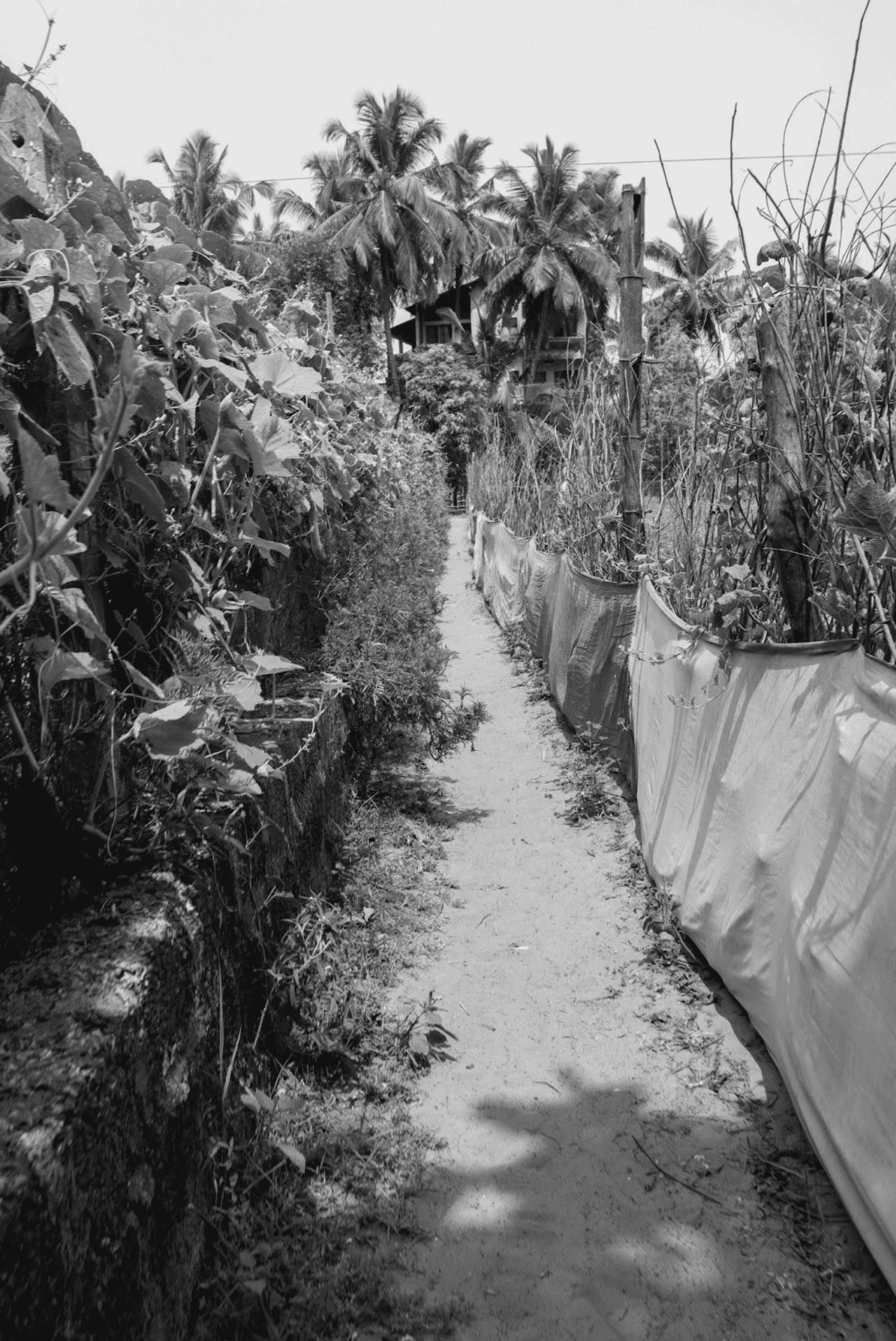
During my time with Tulsi Gowda, she shared with me a simple yet profound truth that has become the heart of this project:
'Trees are our home. If there are no trees, no crops, the weather will be worse, the sun will be hotter and there will be no rain. What will we do without rain? We should teach our children about the wild and how essential it is for us to survive.'
In the struggle against modernisation, the older women of the tribe are leading by maintaining their unique way of saree draping and wearing beads around their neck as a symbol of their tribe’s unique representation.
“The beads around the neck are our fashion. But younger people of the tribe are forgetting this and moving to the fashion of the outside world.” - Tulsi Gowda
Unfortunately, these women are the last generation to carry out these cultural traditions. After facing discrimination in several aspects of their lives, the younger generations moved on with the modern world to blend in with the crowd and hide their indigenous identities to protect them from being seen as outsiders.

Meeting her in person shifted my perspective. Initially, I aimed to tell the story of an “unsung hero,” but I realised this was my bias. Tulsi wasn’t focused on fame; for her, environmental care is as essential as breathing. This realisation changed the direction of the project: Roots needed to give young readers the seed of thought, encouraging them to understand the environment’s importance in simple ways they could relate to.
This journey taught me that a project like Roots is not just about telling a story—it’s about planting a seed of thought and letting it grow in the minds of the next generation.
Book Overview:
A children's picture book that aims to encourage young children to talk and act upon environmental conservation through retelling the story of an Indian environmentalist, Tulsi Gowda.
Book Cover Explorations
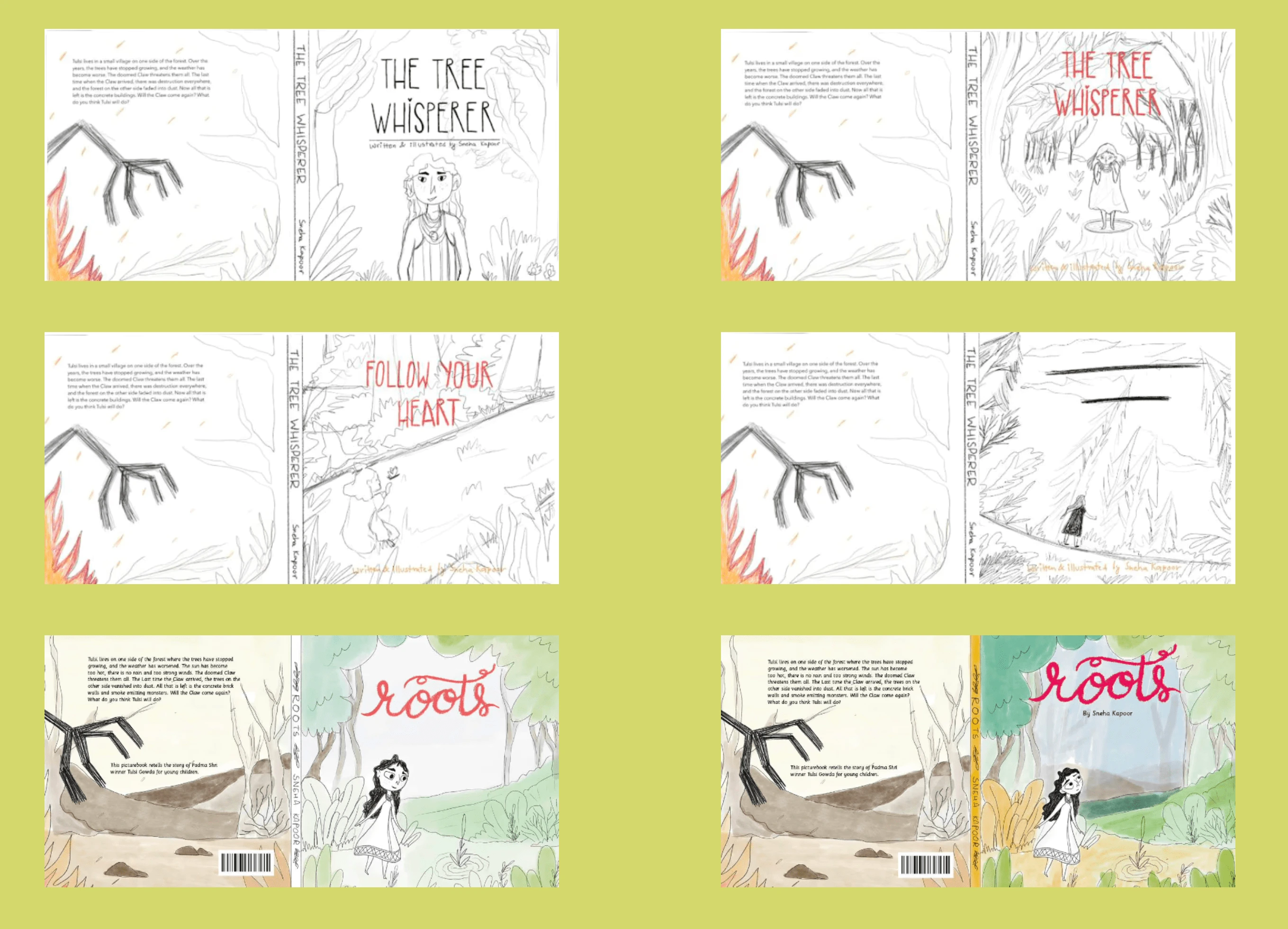
Storyboarding Pages(1-40)

Character Design
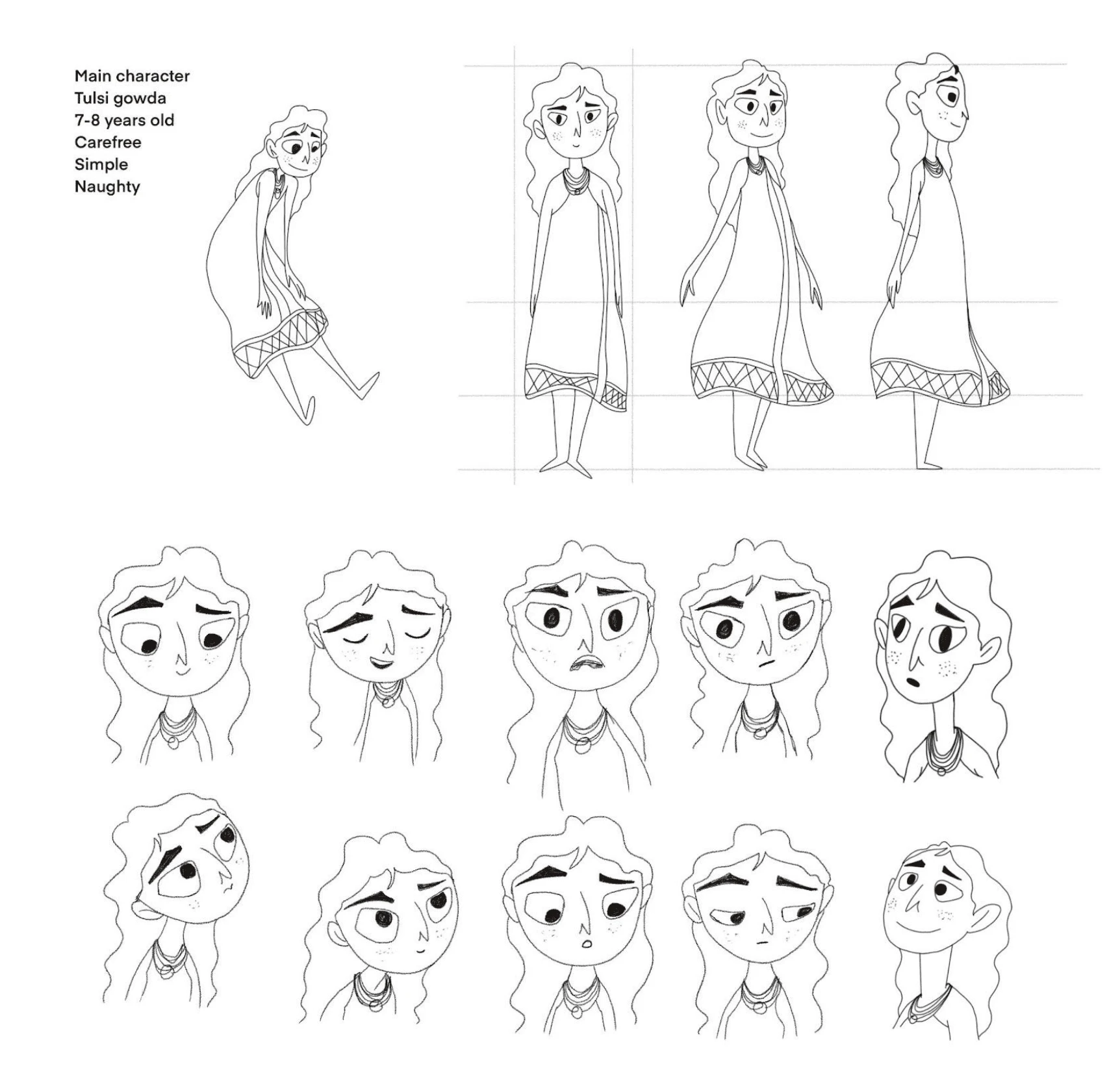
Book Blurb
Tulsi lives on one side of the forest where the trees have stopped growing, and the weather has worsened. The sun has become too hot, there is no rain and too strong winds. The doomed Claw threatens them all. The Last time the Claw arrived, the trees on the other side vanished into dust. All that is left is the concrete walls and smoke-emitting monsters. Will the Claw come again? What do you think Tulsi will do?
Some Essential Spreads
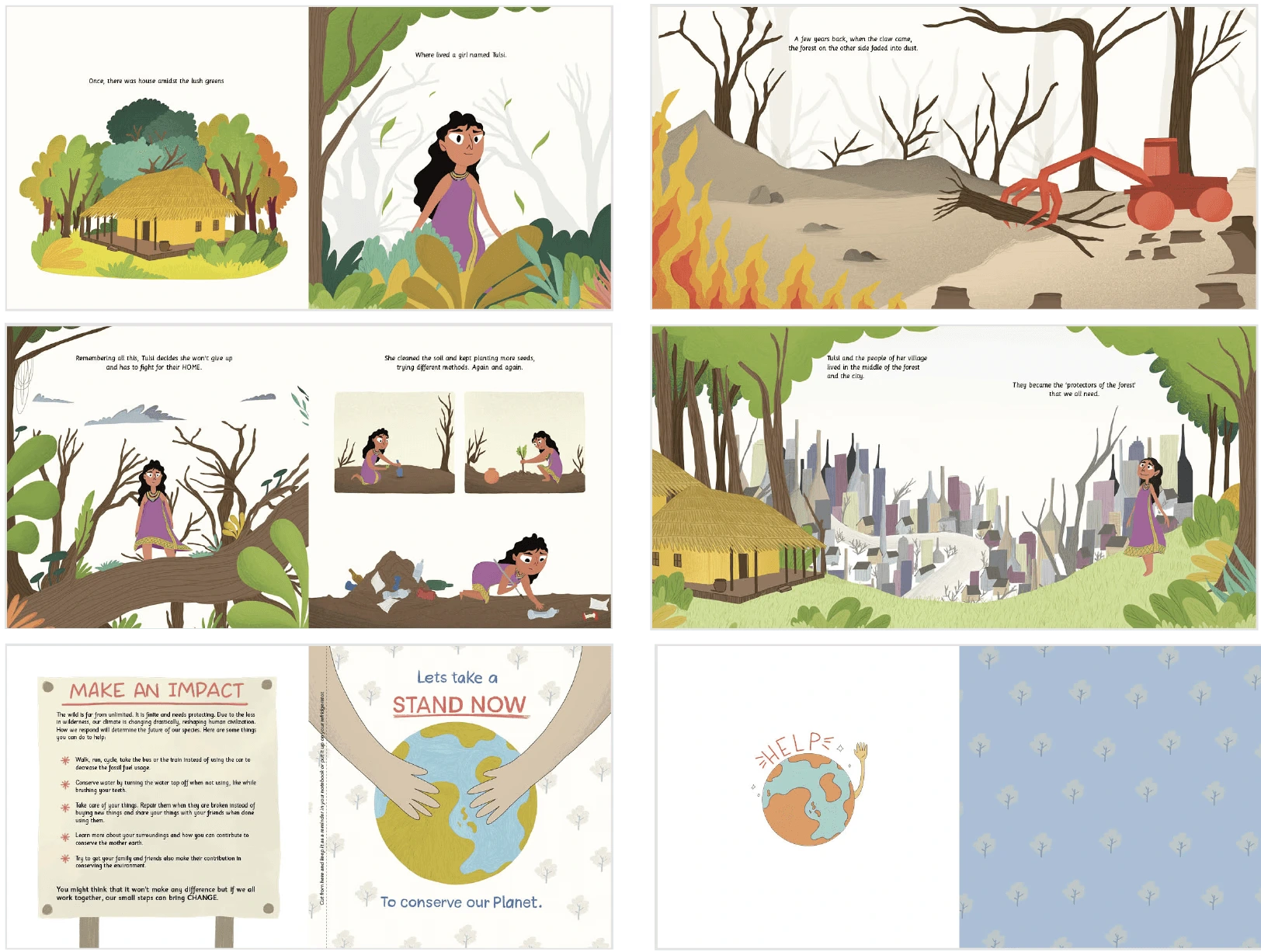
Insights from the Book Reading Sessions
One of the most exciting moments for the kids is when they get to sign their names on the environmental pledge at the end of the book. It’s a small act, but it makes them feel responsible and engaged. I believe it's crucial to encourage these habits early, helping them revisit and nurture their commitment to nature over time.
These sessions also offer a chance to weave in stories about Tulsi Gowda’s life and her cultural background, which helps the children connect more deeply with her and the message. This storytelling sparks their curiosity and gives them a better understanding of how their actions can contribute to environmental conservation.
Like this project
Posted Oct 21, 2024
A children's picture book inspired by the life of Tulsi Gowda, the Padma Shri awardee Indian Environmentalist.





